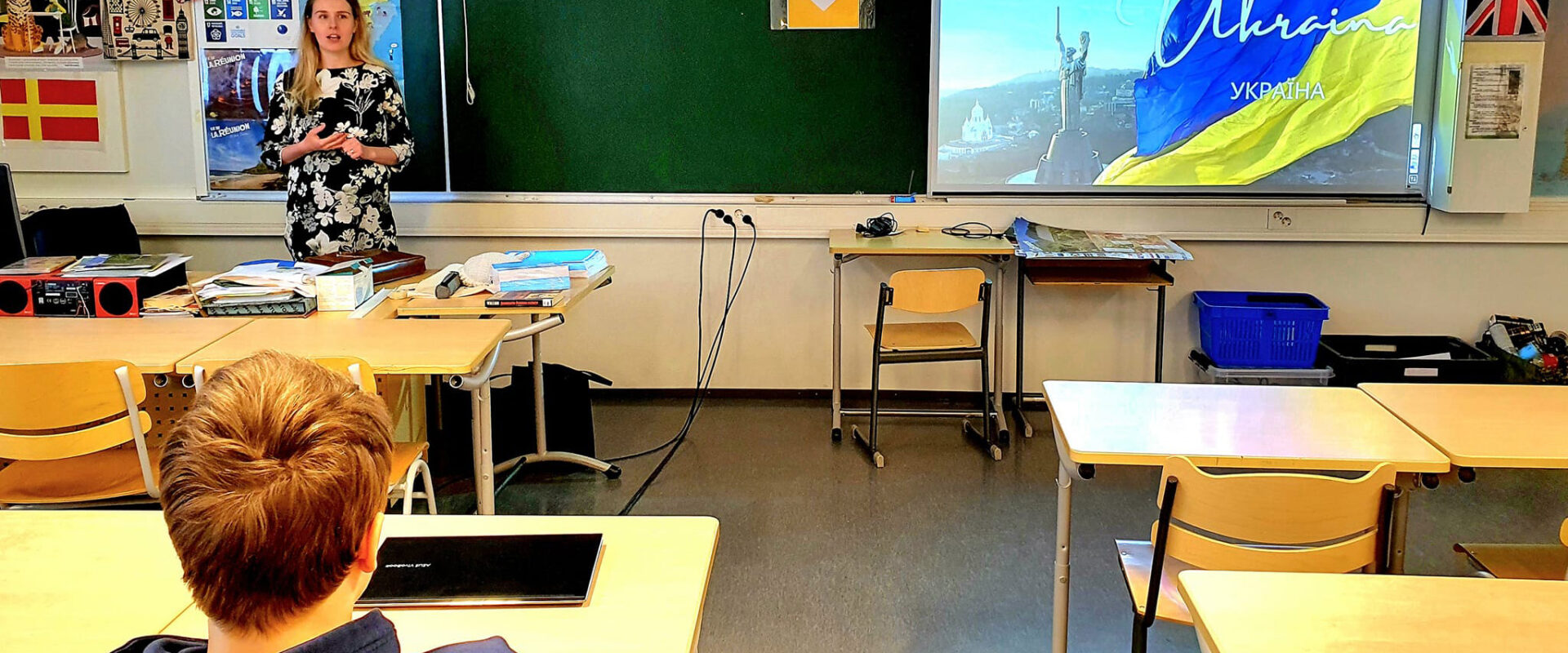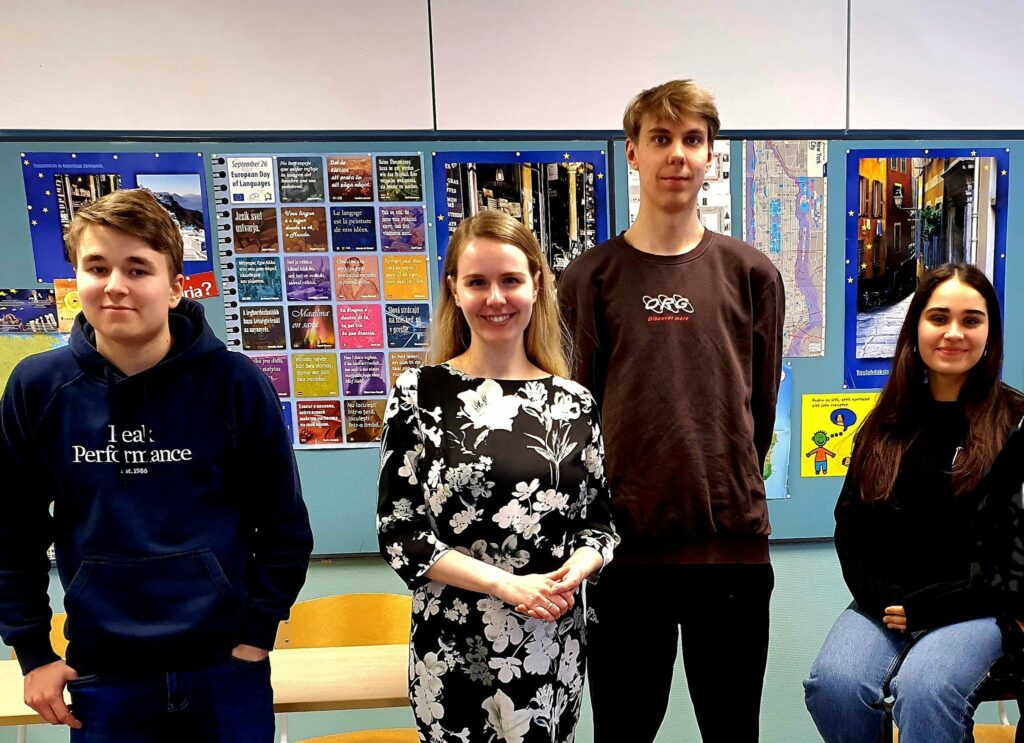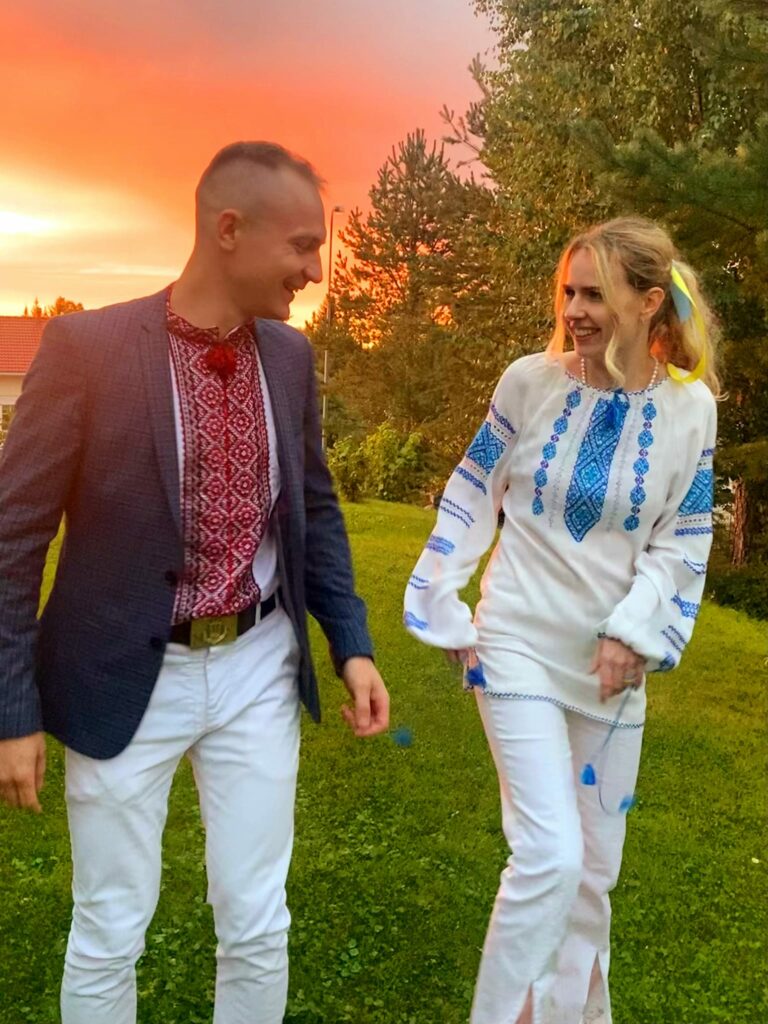School uniforms, borscht, three kisses… Anastasiya Kakhovska talked about major differences between Finland and Ukraine

When you start thinking about Ukraine, you probably start visualizing images colored with blue and yellow. However, what more is there apart from the unforgettable flag?
Anastasiya Kakhovska is the right person to ask that question. Kakhovska visited our English class in Laanila High School and told pretty much everything you can inform about Ukraine in an hour. The funny traditions, peculiar foods, strict studying system, the impact of war on life, and more… If you read this article to an end, it’s inevitable you get some brand new, eye-opening information.
Before the Russian-initiated war began in 2014, Ukrainian language, habits and overall culture was in the shade of Russian culture. If you spoke Russian, it was a mark of sophistication. If not, you were uncivilized. Kakhovska tells us an example: If a person who spoke Russian came to your Ukraine-speaking village, everyone tried to speak Russian to this person—even if they really couldn’t.
The war set the wheels in motion and after the full-scale-war started in 2022, changes began to speed up radically and Ukrainian culture became a valued matter of heart. “Nowadays, even if we have a meeting with East-Ukrainian people, we always try to speak Ukrainian language—when before it was Russian”, says Kakhovska. She herself lived in Konotop, which is nearby the border of Russia. Back in the days about 90 % of the people there spoke Russian in their day-to-day life. Nowadays the number is scarcely that high.
Rigid studying system
Kakhovska has lived in Finland for 12 years now and has noticed major differences between Finland and Ukraine. One sizeable dissimilarity concerns the school system.
In Ukraine, all the students have school uniforms. Usually, girls come to school wearing black skirts and shirts and boys with black pants and white blouses. In addition, schools are more regimented and teachers stricter. As we can have a snack in the middle of a lesson, go to bathroom and tell our opinions freely without being scared of the consequences, in Ukraine none of those are — or at least were in Kakhovska’s times — feasible.
“When I once stood up for our history teacher and said: ‘How can you say things like that’, I got evicted from the lesson and lectured with my parents”, tells Kakhovska.
The reason for teachers’ cruelty was in Kakhovska’s opinion the education during the Soviet Union. Nobody really wanted to be a teacher anymore because of the decreased pay that you got from it, so the ones that ended up there were the conservative ones who got educated under the old system. Kakhovska hopes that there have been changes in the school system in recent years.

Extraordinary eating habits
As everyone could guess, one big distinction between Ukraine and Finland is food. One—probably the most popular—food is borscht.
“It’s impossible to give a specious recipe for it”, says Kakhovska. She tells how every family in Ukraine have different secret recipes for it.
However, the general idea of borscht is soup that contains beetroot and some kind of sour broth. Still, should you add any vegetables to the soup, it can still be called borscht. Self-baked bread rolls are very common to enjoy while having borscht. The bread rolls are dipped in garlic oil and pork fat is put on top.
Unlike Finns, Ukrainians use plentiful of smetana in everything, especially in traditional foods. Another very popular side dish in Ukraine is curd. Its texture is very different from the Finnish version. When here the curd is very smooth, in Ukraine it has a great deal of lumps in it—such as cottage cheese. This curd is used in very different ways. For example, on top of a thin pancake.
Summer camps as improvement tools
Ukraine is a very big country; almost two times as big as Finland. Its southern border is at the same level as Italy’s northern border. This is why Ukrainians tend to spend their holidays inside their home country. Citizens who seek sun, warmth and beach, go to southern Ukraine, and those who want snow and good skiing opportunities go to northern Ukraine.
Especially summer holidays are the golden times of Ukrainian adolescents, since almost every one of them goes to month-long camps. In the camps they learn to improvise — which is in Kakhovska’s opinion “the super power of Ukrainians”. There are also lots of performances, so the children learn to throw themselves into thrilling situations.
When being in the camps for so long with random people, it’s important to be talkative and open to get to know everyone. This is how you get the best possible experiences out of the camps. Ukrainians are indeed very social people—much more social than Finns.
For example, in Ukraine it’s very common to ask for food items from your neighbors if you need anything at all. If you did that in Finland, you would probably get some odd looks on yourself. You can also see the differences from the official greetings: when we Finns shake our hands awkwardly, Ukrainians give each other three kisses on the cheek.

Diverse wardrobe
In Ukraine it’s very common to use cross-stitched dresses and shirts. Probably the most popular Ukrainian clothing is vyshyvanka — embroidered shirt. These are usually handmade and can cost anything between 50 and 4000 euros. Every area has its own pattern and color, so when looking at someone’s vyshyvanka, you can deduce where they have bought it. Ukrainian national clothes also include large necklaces.
Killer cornfields
Because of the size of Ukraine, there are also areas with very good grain-growing conditions. Ukraine is actually very significant producer of grain. Therefore, when the war started and loads of grain transports to Africa were cancelled, people in Africa suffered from food shortage.
The cornfields of Ukraine are nowadays very dangerous places to be in since Russian soldiers have hidden mines all over them. A child of one Ukrainian family that Kakhovska knows, was running in the field when they accidently hit a mine and passed away immediately.
It’s important to understand Ukrainian traditions and culture, because there are about 40 000 Ukrainians in Finland at the moment, and more is to come.
Text: Laura Kuisma


